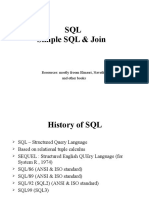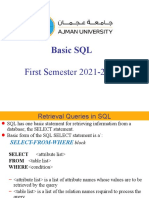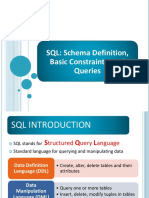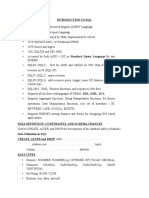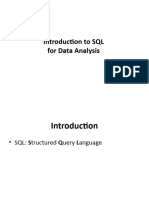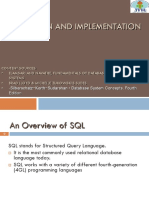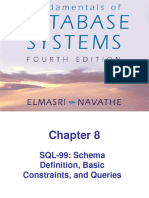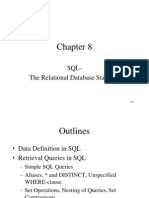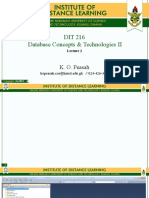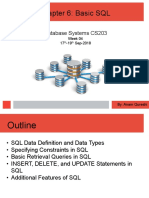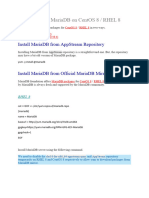0% found this document useful (0 votes)
57 views23 pagesWeek+4 Part B
This document provides an overview of basic SQL concepts including:
1) Specifying constraints like primary keys, foreign keys, default values, and check clauses.
2) The basic SELECT-FROM-WHERE structure of SQL queries including logical operators, projections, and selections.
3) Additional SQL clauses like ORDER BY, DISTINCT, JOIN, ALIAS, arithmetic operations, and pattern matching.
Uploaded by
abubakar kaleemCopyright
© © All Rights Reserved
We take content rights seriously. If you suspect this is your content, claim it here.
Available Formats
Download as PDF, TXT or read online on Scribd
0% found this document useful (0 votes)
57 views23 pagesWeek+4 Part B
This document provides an overview of basic SQL concepts including:
1) Specifying constraints like primary keys, foreign keys, default values, and check clauses.
2) The basic SELECT-FROM-WHERE structure of SQL queries including logical operators, projections, and selections.
3) Additional SQL clauses like ORDER BY, DISTINCT, JOIN, ALIAS, arithmetic operations, and pattern matching.
Uploaded by
abubakar kaleemCopyright
© © All Rights Reserved
We take content rights seriously. If you suspect this is your content, claim it here.
Available Formats
Download as PDF, TXT or read online on Scribd
/ 23




